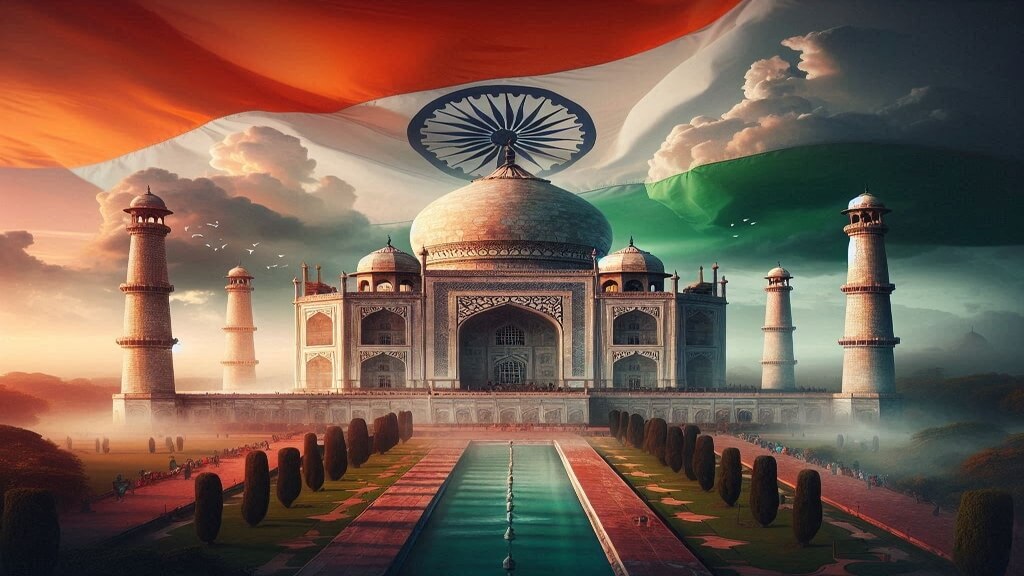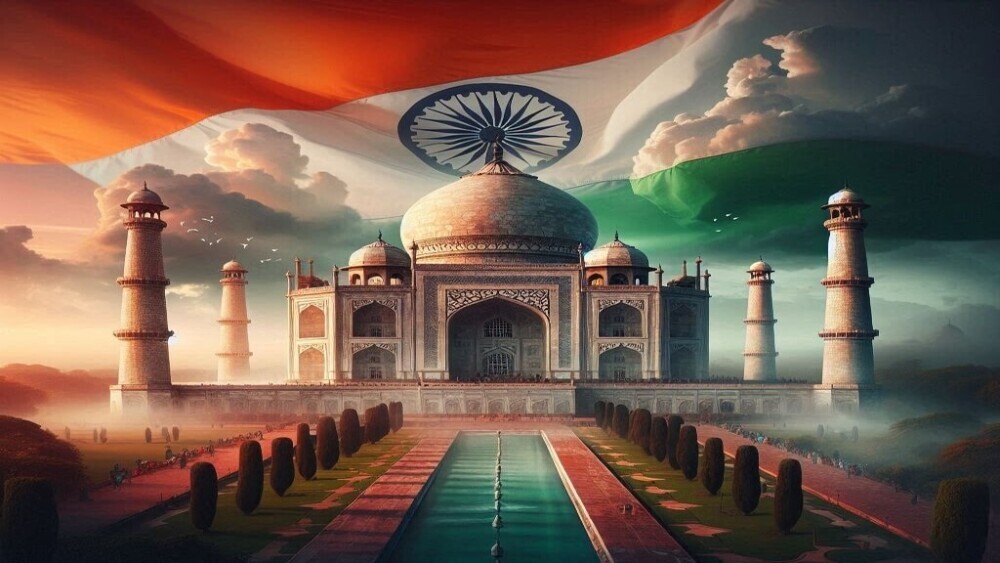
India, a land of ancient civilizations, vibrant cultures, and diverse landscapes, is a country that offers an unmatched travel experience. From its snow-capped Himalayan peaks to its golden deserts, bustling cities, and serene backwaters, India is a treasure trove of unforgettable destinations. Whether you’re interested in history, spirituality, nature, or adventure, here are ten must-visit places in India that showcase the country’s incredible variety.
1) Delhi: A Blend of Old and New
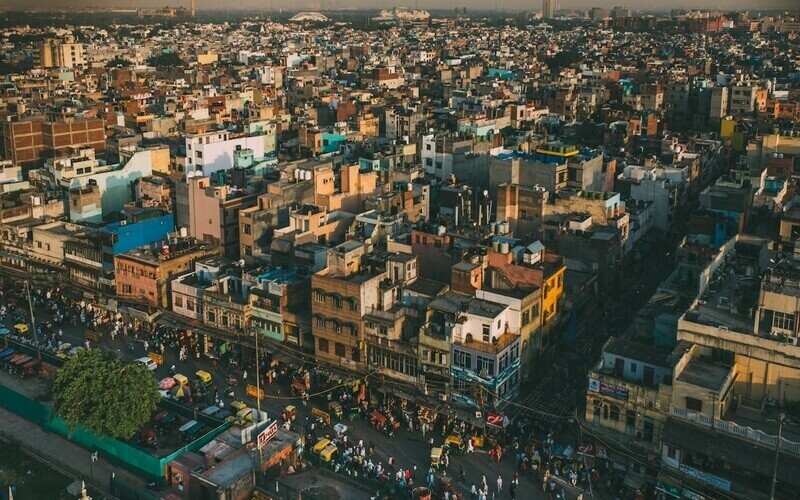
(Photo by Mohit Hambiria on Pexels)
Delhi, the capital of India, offers a unique mix of ancient and modern attractions. It’s a city where historical landmarks stand alongside contemporary architecture, creating an engaging contrast for visitors.
The heart of Old Delhi is Red Fort, a UNESCO World Heritage site that dates back to the Mughal era. Nearby is Jama Masjid, one of the largest mosques in India, built by Emperor Shah Jahan. A visit to Chandni Chowk, the city’s bustling marketplace, is a must for those who want to experience traditional street food and vibrant bazaars.
On the other hand, New Delhi is home to India Gate, a national monument, and the magnificent Rashtrapati Bhavan, the official residence of the President of India. Qutub Minar and Humayun’s Tomb are other historical treasures in this vibrant capital city.
Must-Do Activities:
- Explore the majestic Red Fort and walk through the narrow lanes of Chandni Chowk.
- Visit India Gate and stroll around the beautiful Lodhi Gardens.
- Admire the architectural marvels of Qutub Minar and Humayun’s Tomb.
2) Agra: The City of the Taj Mahal
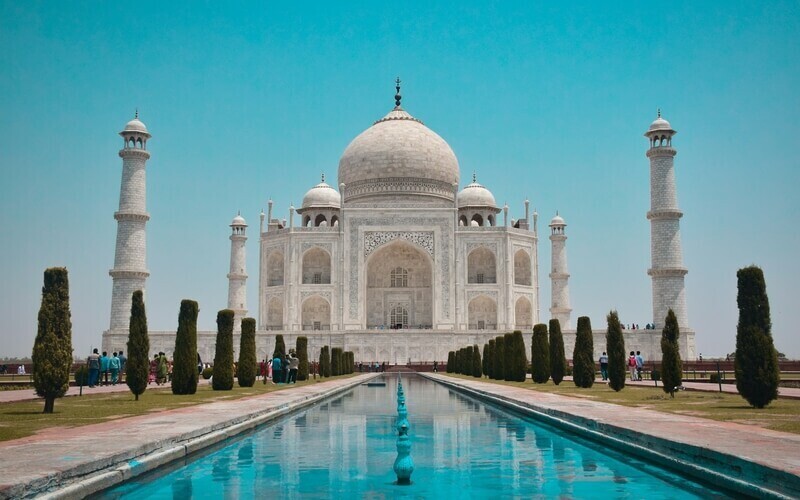
(Photo by Jovyn Chamb on Unsplash)
No visit to India is complete without seeing the Taj Mahal in Agra. This white marble mausoleum, built by Emperor Shah Jahan in memory of his beloved wife Mumtaz Mahal, is a UNESCO World Heritage site and one of the Seven Wonders of the World. The Taj Mahal’s beauty is unrivaled, particularly at sunrise and sunset, when the changing light bathes the monument in various hues.
Agra is also home to Agra Fort, another stunning example of Mughal architecture. This red sandstone fortress, also a UNESCO site, offers a glimpse into India’s royal past. A short drive from Agra is Fatehpur Sikri, a well-preserved ghost city that was once the capital of the Mughal Empire.
Must-Do Activities:
- Witness the iconic beauty of the Taj Mahal at dawn or dusk.
- Visit the Agra Fort and explore its impressive palaces and courtyards.
- Take a day trip to Fatehpur Sikri to see its fascinating ruins.
3) Jaipur: The Pink City
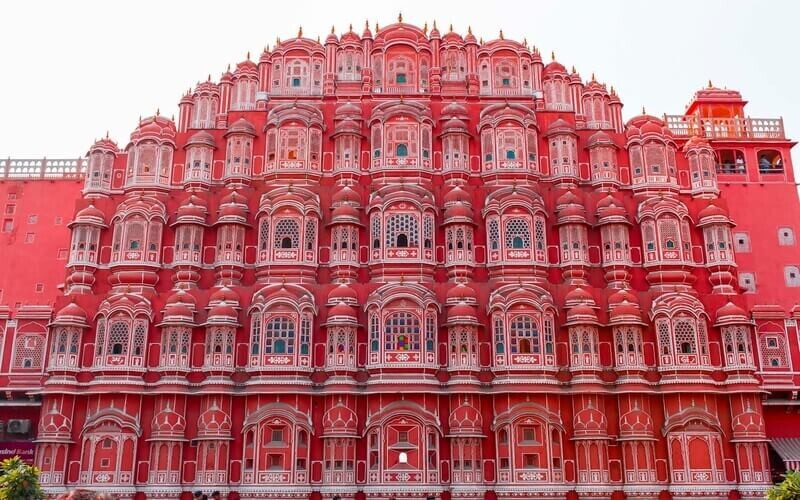
(Photo by Sagar Soneji on Pexels)
Jaipur, the capital of Rajasthan, is known as the Pink City for its terracotta-colored buildings. The city is part of the Golden Triangle tourist circuit, which includes Delhi and Agra, and is renowned for its opulent palaces, majestic forts, and vibrant bazaars.
The Amber Fort, located on a hilltop overlooking the city, is one of Jaipur’s most impressive landmarks. This fortress, with its intricate designs and stunning courtyards, offers panoramic views of the surrounding landscape. The Hawa Mahal (Palace of Winds), with its iconic façade of honeycombed windows, is another must-see, along with the City Palace, which still houses the royal family.
Jantar Mantar, a collection of astronomical instruments built by Maharaja Jai Singh II, is a UNESCO World Heritage site that reflects India’s advancements in science and astronomy.
Must-Do Activities:
- Visit the majestic Amber Fort and ride an elephant to the entrance.
- Admire the stunning façade of the Hawa Mahal.
- Explore the City Palace and the Jantar Mantar observatory.
4) Varanasi: The Spiritual Capital of India
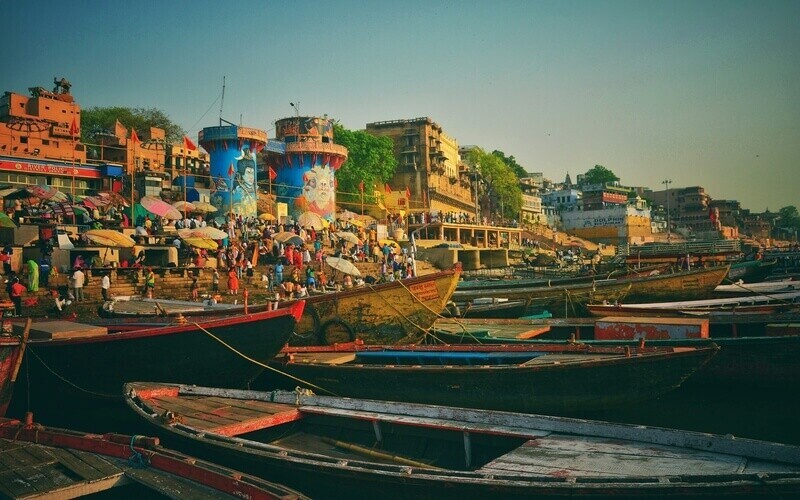
(Photo by Pratish Srivastava on Unsplash)
Varanasi, one of the oldest continuously inhabited cities in the world, is regarded as the spiritual heart of India. Situated along the banks of the sacred Ganges River, Varanasi is a pilgrimage destination for Hindus who come to bathe in the holy river and perform rituals at its ghats (steps leading down to the water).
A boat ride on the Ganges at sunrise is a truly spiritual experience, where you’ll witness the life and rituals of locals along the riverbanks. The evening Ganga Aarti, a fire-lit prayer ceremony at Dashashwamedh Ghat, is another awe-inspiring experience.
Varanasi is also home to Kashi Vishwanath Temple, one of the most revered temples dedicated to Lord Shiva. The nearby town of Sarnath, where the Buddha gave his first sermon, adds to the spiritual significance of the region.
Must-Do Activities:
- Take a serene boat ride on the Ganges River at sunrise.
- Witness the mesmerizing Ganga Aarti ceremony in the evening.
- Visit Kashi Vishwanath Temple and the Buddhist site of Sarnath.
5) Kerala: God’s Own Country
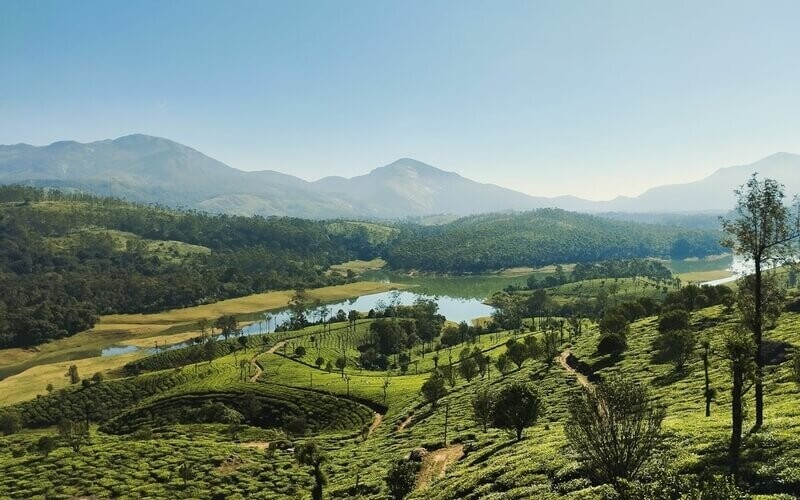
(Photo by Sayan Samanta on Pexels)
Kerala, located in southern India, is famous for its serene backwaters, lush greenery, and Ayurvedic treatments. The tranquil backwaters of Alleppey are a network of interconnected canals, rivers, and lakes, offering a peaceful escape from city life. A houseboat cruise through the backwaters is one of the most unique experiences in India, where you can relax while floating through coconut groves and traditional villages.
Kerala is also known for its hill stations like Munnar, famous for its tea plantations and mist-covered hills. The Periyar Wildlife Sanctuary in Thekkady offers the opportunity to see elephants and other wildlife in their natural habitat.
Beaches such as Varkala and Kovalam are perfect for those looking to unwind by the sea, while Fort Kochi showcases the region’s colonial past with its Chinese fishing nets and European architecture.
Must-Do Activities:
- Cruise through the backwaters of Alleppey on a traditional houseboat.
- Visit the scenic tea plantations of Munnar.
- Relax on the stunning beaches of Varkala and Kovalam.
6) Rishikesh and Haridwar: The Yoga and Spiritual Centers
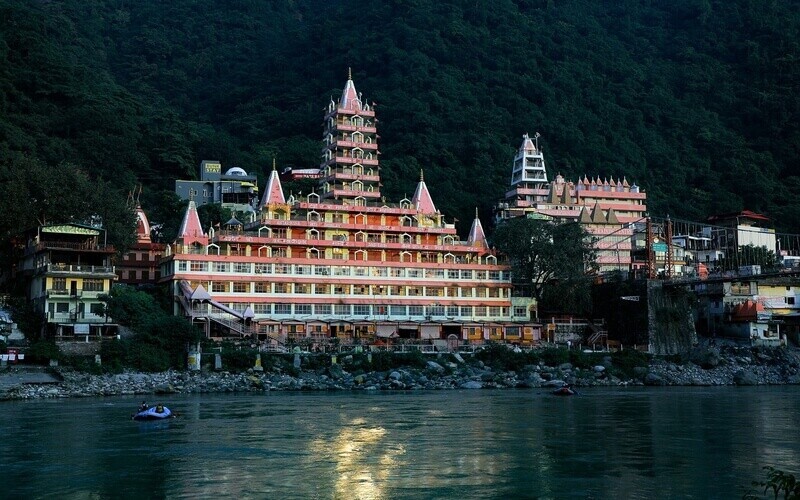
(Photo by vprthawait on Pixabay)
Rishikesh, known as the Yoga Capital of the World, and the nearby city of Haridwar are two of the most sacred places in northern India. Situated at the foothills of the Himalayas, these towns are famous for their ashrams, yoga centers, and spiritual significance.
Rishikesh attracts visitors from around the globe who come to practice yoga and meditation in a peaceful environment. The Lakshman Jhula, a suspension bridge over the Ganges, is a major landmark, offering stunning views of the river and the surrounding hills.
Haridwar, just a short distance from Rishikesh, is another important pilgrimage site, especially during the Kumbh Mela festival, one of the largest religious gatherings in the world. The evening Ganga Aarti at Har Ki Pauri is a breathtaking sight, with lamps and flowers floating down the sacred river.
Must-Do Activities:
- Practice yoga and meditation in one of Rishikesh’s ashrams.
- Cross the Lakshman Jhula for panoramic views of the Ganges.
- Attend the evening Ganga Aarti at Har Ki Pauri in Haridwar.
7) Mumbai: The City of Dreams
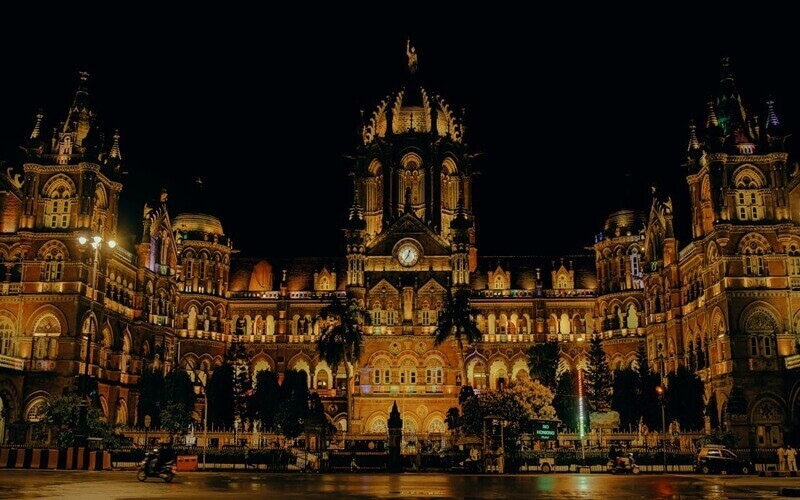
Mumbai, the financial and entertainment capital of India, is a city of contrasts, where colonial architecture coexists with towering skyscrapers. This bustling metropolis is home to Bollywood, India’s film industry, and offers visitors a mix of cultural attractions, beaches, and vibrant markets.
One of the most iconic landmarks in Mumbai is the Gateway of India, a grand arch built to commemorate the visit of King George V and Queen Mary. From here, you can take a boat ride to Elephanta Island, where ancient rock-cut temples dedicated to Lord Shiva await.
The Chhatrapati Shivaji Terminus, a UNESCO World Heritage site, is an outstanding example of Victorian Gothic architecture, while Marine Drive is the perfect place to watch the sunset over the Arabian Sea.
Must-Do Activities:
- Visit the Gateway of India and take a boat to Elephanta Caves.
- Walk along Marine Drive and enjoy the sunset.
- Explore the bustling markets of Colaba and Crawford Market.
8) Goa: Beaches and Portuguese Heritage
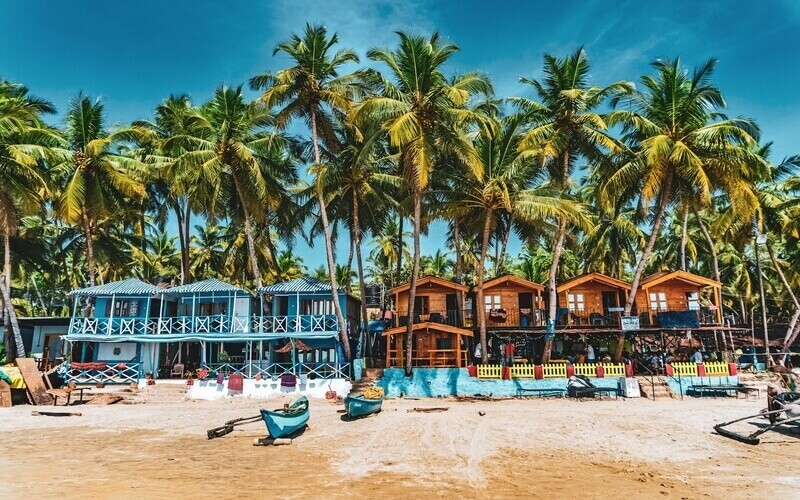
(Photo by Sumit Sourav on Unsplash)
Goa, located on India’s western coast, is famous for its golden beaches, laid-back vibe, and vibrant nightlife. A former Portuguese colony, Goa is a unique blend of Indian and European cultures, reflected in its architecture, cuisine, and lifestyle.
Goa’s coastline is lined with beautiful beaches like Baga, Anjuna, and Palolem, each offering something different—whether it’s beachside parties, water sports, or quiet relaxation. The state is also known for its historic churches, particularly the Basilica of Bom Jesus, a UNESCO World Heritage site that houses the remains of St. Francis Xavier.
For those looking to explore Goa beyond its beaches, the Dudhsagar Waterfalls, one of the tallest in India, offers a refreshing escape into nature.
Must-Do Activities:
- Relax on the sun-soaked beaches of Baga, Anjuna, or Palolem.
- Visit the historic Basilica of Bom Jesus and the Se Cathedral.
- Take a trip to the stunning Dudhsagar Waterfalls.
9) Amritsar: The Heart of Sikhism

(Photo by Inder Singh on Pexels)
Amritsar, located in the northern state of Punjab, is the spiritual center of the Sikh religion and home to the magnificent Golden Temple. This stunning temple, also known as Harmandir Sahib, is made of marble and gold and sits in the middle of a serene man-made lake, making it one of the most beautiful and peaceful places in India.
The temple complex is open to people of all faiths, and visitors can enjoy a meal at the Langar, the community kitchen that serves free food to thousands of people every day. The Akal Takht, the highest seat of authority in Sikhism, is also located within the Golden Temple complex.
Amritsar is also known for the Jallianwala Bagh, a memorial to the victims of the 1919 massacre, and the Wagah Border Ceremony, a patriotic flag-lowering event that takes place at the border between India and Pakistan.
Must-Do Activities:
- Visit the stunning Golden Temple and experience its serene atmosphere.
- Pay respects at the Jallianwala Bagh memorial.
- Witness the vibrant Wagah Border Ceremony.
10) Ladakh: Land of High Passes

(Photo by SOURAV BHADRA on Unsplash)
Ladakh, located in the northernmost region of India, is a land of dramatic landscapes, towering mountains, and ancient monasteries. Known as the Land of High Passes, Ladakh is a paradise for adventure seekers, offering opportunities for trekking, river rafting, and motorbiking.
The town of Leh serves as the gateway to Ladakh’s attractions, including the Thiksey Monastery, a Tibetan Buddhist monastery perched on a hilltop with breathtaking views of the surrounding valley. Pangong Lake, a stunning high-altitude lake that changes colors throughout the day, is one of Ladakh’s most photographed spots.
For those seeking adventure, the Khardung La Pass, one of the highest motorable roads in the world, offers thrilling views of the Himalayan range.
Must-Do Activities:
- Explore the picturesque Thiksey Monastery and enjoy the panoramic views.
- Take in the changing hues of Pangong Lake.
- Drive along the breathtaking Khardung La Pass.
Conclusion: A Journey Through India’s Wonders
From the bustling streets of Delhi to the peaceful landscapes of Ladakh, India is a country that offers a unique blend of history, culture, spirituality, and natural beauty. Whether you’re exploring its ancient monuments, vibrant cities, or serene backwaters, India’s diverse destinations promise a travel experience like no other.
Unique Fact About India
India is the second-largest English-speaking country: Although Hindi is the most spoken language, India has the second-largest population of English speakers after the United States, with approximately 125 million people speaking English.
"India is a country that touches the heart and opens the mind, a place where every experience becomes a memory."

